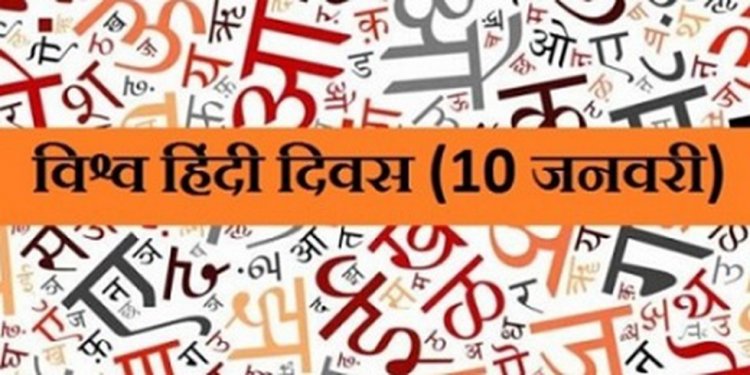Discover intriguing facts about Hindi Language this World Hindi Day

‘Hindi’ is one of the two official languages in our country and its history goes decades back and is supremely fascinating. It is one of the fourth most-spoken languages in the world after Spanish, English and Mandarin. Hindi is spoken in many countries including United States of America, United Kingdom, New Zealand, United Arab Emirates, Bangladesh, Germany, Pakistan, Nepal, Uganda, Guyana, Suriname, Trinidad, Mauritius, and South Africa.
Just to illustrate the importance of Hindi language, we would like to inform you that Oxford Dictionary had included words like 'Acha', (Good), 'Bada Din', (big day) 'Bacha' (Child) and 'Surya Namaskar'.
January 10 is observed as a World Hindi Day. This Hindi day let us take a deep dive and know more about this language.
Origin of the word ‘Hindi’ and language ‘Hindi’
In Northern India, there was a river called Sindh and the area around this river was known as 'Sindhu'. There is no hardcore proof but the word ‘Hindi’ is believed to be transformed from the original Sanskrit word ‘Sindhu’. When Iranians entered Indi this ‘Sindhu’ word became 'Hindu' and later it became ‘Hindi’, and then was called 'Hind'.
Old Hindi acquired many loanwords from Persian, as well as Arabic after the arrival of Islamic administrative rule in northern India which led to the development of Hindustani. In the 18th century, an intensively Persianised version of Hindustani emerged and that was called Urdu. The association of Urdu with Muslims and the growing importance of Hindustani in colonial India prompted Hindus to develop a Sanskritised version of Hindustani, leading to the formation of Modern Standard Hindi a century after the creation of Urdu. And that is how Hindi came into being.
World Hindi Day is not the same as National Hindi Day
Both days are celebrated on different dates and for very different reasons.
The first World Hindi Conference was held on January 10, 1975, in the city of Nagpur, Maharashtra. This conference was inaugurated by the late Prime Minister Indira Gandhi. The Chief Guest of this conference was Mauritius Prime Minister Seewoosagur Ramgoolam. This event was a huge success, nationally as well as internationally, and was attended by 122 delegates from over 30 countries. Ever since then, the World Hindi Conference has been organised in different countries like India, Mauritius, United Kingdom, Trinidad and Tobago and the United States of America.
To mark the anniversary of this conference the then Prime Minister Manmohan Singh declared this day as World Hindi Day. The first-ever World Hindi Day was observed on January 10 of 2006.
The focus of World Hindi Day is to promote the language at the global stage. Its objective is to create a suitable environment for the promotion of Hindi worldwide and to present Hindi as the prevalent language of the world.
Various government and non-government institutions organise unique programs for the promotion of Hindi. The Indian Embassies located in other countries outside India celebrates World Hindi Day by organizing special programs.
On the other hand, the 'National Hindi Day' is celebrated on September 14 every year. The reason f celebration of this day is, the Constituent Assembly gave Hindi the status of official language on September 14, o1949 and since then Hindi Day is celebrated on September 14. The first Prime Minister of the country, Jawaharlal Nehru, decided to celebrate Hindi Day on September 14. There were many writers like Maithili Sharan Gupta, Kaka Kalelkar, Hazari Prasad Dwivedi, Seth Govindadas made important contributions to make Hindi a national language.

But did you know that ‘Hindi’ is ‘not’ our national language?
Yes, the reality is that Hindi is not our national language. Our country has not identified any language as a national language. Hindi and English are recognized as official languages and that’s about it. The popularity of Hindi language adds to the myth, which is believed by many people that Hindi is our national language.
However, the different states in India are allowed to choose between English and Hindi as their official language via legislation. The Constitution also recognizes 22 regional languages, including Hindi as scheduled languages.
One must know that the national language status for Hindi is a long-debated theme. In the year 2010, the Gujarat High Court clarified that Hindi is not the national language of India because the constitution does not mention it as such.
This fact does not dilute the significance this language holds nationally and internationally.
Few intriguing facts about the Hindi Language:
Contributor to the English lexicon
Hindi has gifted a huge number of to the English language. Here are some of them - Shampoo,
Yoga, Roti, Bangle, Bungalow, Cheetah, Dungaree, Avatar, Bandanna, Guru, Jodhpurs, Khaki, Mogul, Mahar, Chutney, Dinghy, Nirvana, Punch, Pyjamas.
Distinct and independent sound
In Hindi, each letter has its unique sound and that makes it very easy to pronounce. Therefore, learners find it easy to pronounce the words because they are spoken as they are written, just like Spanish.
More letters than English
The alphabetical table of Hindi is called Varnmala or garland of letters and it contains 11 vowels and 33 consonants.
Language of Unity
During our freedom struggle, use of Hindi was propagated as the collective voice of India, the language of protest and the language of communication by Mahatma Gandhi, the Father of our Nation.















































